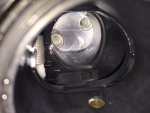Hello-
We've had issues with calcium deposits forming in our heat exchanger causing reduced flow and the heat exchanger to overheat, eventually actually melting the plastic side panel on the heat exchanger. Manufacturer's reps suggested lowering the pH from 7.5 to 7.3 and felt that it was pH spikes causing the problem. We use Metal Magic for stain control. I found this article (if the link doesn't work Google "aqua magazine the case of the mysterious pool deposits"). It suggests that HEDP in the pool can result in unwanted calcium phosphate deposits in the heater. Has anyone else had this experience? Our pool heater runs off and on until the pump turns off and there is no pressure, potentially leaving still water in a hot heat exchanger.
Debating on what to do - drain the pool and move from Metal Magic to something like Sequa Sol? I've forwarded the link to our pool people plus to the manufacturer's rep to consider.
pH 7.5
CH 150
TA 100
Thanks for your help!
We've had issues with calcium deposits forming in our heat exchanger causing reduced flow and the heat exchanger to overheat, eventually actually melting the plastic side panel on the heat exchanger. Manufacturer's reps suggested lowering the pH from 7.5 to 7.3 and felt that it was pH spikes causing the problem. We use Metal Magic for stain control. I found this article (if the link doesn't work Google "aqua magazine the case of the mysterious pool deposits"). It suggests that HEDP in the pool can result in unwanted calcium phosphate deposits in the heater. Has anyone else had this experience? Our pool heater runs off and on until the pump turns off and there is no pressure, potentially leaving still water in a hot heat exchanger.
Debating on what to do - drain the pool and move from Metal Magic to something like Sequa Sol? I've forwarded the link to our pool people plus to the manufacturer's rep to consider.
pH 7.5
CH 150
TA 100
Thanks for your help!


